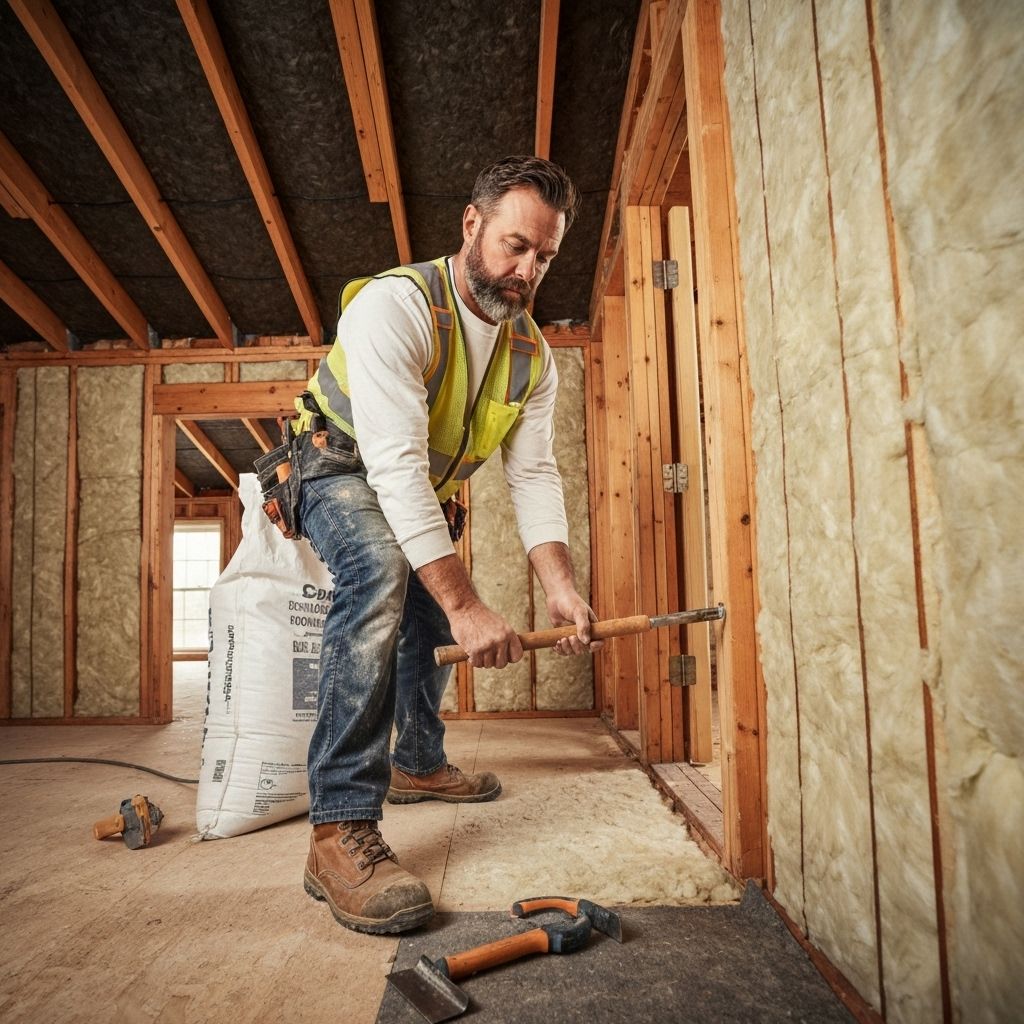Budget-Friendly Residential Insulation: Save Expenses & Resources

Residential thermal insulation plays a vital role in maintaining a comfortable living environment while also contributing greatly to energy savings. In an age where energy costs continue to escalate, discovering cost-effective ways to thermal-proof your home can make a notable difference in your monthly bills and overall energy consumption. This manual will walk you through everything you need to know about home insulation, from grasping R-values to selecting the right materials for your individual needs.
Whether you are a homeowner looking to boost your property's energy efficiency or a DIY enthusiast prepared to tackle insulation projects, this comprehensive resource will help you make informed decisions. We will examine common pitfalls, the benefits of proper insulation, and how to evaluate the current state of your home’s insulation. By the end of this guide, you will be equipped with the knowledge to ensure your home is not just cozy but also a smart investment for the future.
Comprehending Residential Insulation
Home insulation is vital in maintaining a comfortable living environment and boosting energy efficiency. It acts as a shield to heat flow, keeping your home hot in winter and chilly in summer. By minimizing the movement of heat, insulation aids you cut back on energy bills and lowers the strain on your heating and cooling systems. Understanding the importance of insulation is the first step toward achieving a more energy-efficient home.
Different types of insulation materials are offered, each with unique properties and benefits. Common options include fiberglass batts, foam boards, and blown-in cellulose. When choosing insulation, it's vital to think about the R-value, which evaluates thermal resistance. A greater R-value indicates superior quality insulation performance. The appropriate choice depends on your local climate, the part of the house you are insulating, and your budget.
An additional vital aspect of insulation is the significance of air sealing. Though the best insulation can perform poorly if there are gaps and leaks permitting air to escape or enter your home. Closing these gaps will improve the efficiency of your insulation and minimize energy waste. Well-installed insulation not only contributes to diminished utility bills but also improves indoor air quality and overall home comfort.
Choosing the Right Insulation
Picking the appropriate insulation material for your home is crucial for improving energy effectiveness and comfort. One of the key considerations is the type of insulation—batt or loose-fill. Batt insulation, often made of fiberglass, comes in cut-to-size panels, making it easier to install for DIY tasks. On the other hand, blown in insulation offers superior coverage, particularly in challenging areas, as it can seal gaps and voids more thoroughly. Understanding https://rentry.co/qshf3t8h will help you reach a more educated decision.
Another vital factor is the R-value, which measures the insulation's resistance to heat movement. A higher R-value indicates superior insulating capability. A homeowner's guide to R-values can help homeowners assess their regional climate and local energy codes to determine the optimal level of insulation needed. Keep in mind that different zones of your home may require different R-values for optimal performance. Therefore, a detailed evaluation of your insulation needs will ensure you choose materials that provide the best value.
In conclusion, considering the insulation's sustainability and longevity should guide your choice. Some materials, like foam insulation, provide excellent energy-saving benefits but may have a significant environmental impact. On the contrary hand, eco-friendly options can be found, such as cellulose or natural fibers, which also offer positive insulation qualities. Considering both energy savings and environmental impact will help you choose insulation that benefits your home, your budget, and the planet.
Thermal Insulation Care and Improvements
Consistent maintenance of your house thermal barrier is crucial for guaranteeing its efficacy and lifespan. Start by carrying out regular checks of your insulation material, looking for indicators of damage, moisture damage, or insect problems. It's important to identify locations where the insulation may have settled, shrunk, or been disrupted, especially in attics or subareas. By noticing https://bestbizportal.com/read-blog/300322 , you can prevent further damage and maintain your home's efficiency.
Improving your insulation should be thought about if you observe increased electricity expenses or varying temperatures throughout your house. Contemporary insulation materials offer superior performance compared to previous options, and putting money into better R-value insulation can greatly improve insulative performance. Furthermore, consider including air sealing methods around glass openings, entryways, and other gaps before enhancing insulation. This combination ensures that you optimize your insulation's efficacy and create a more pleasant living environment.

In conclusion, remaining updated about the latest insulation technologies can also provide affordable solutions for your residence. Materials like foamed insulation and high-performance fiberglass batts can provide enhanced air sealing and insulating effectiveness. Explore local building codes that may encourage upgrades that save energy, as well as financial incentives or refunds provided for insulation enhancements. A proactive approach to insulation care and improvements can lead to significant cost savings and enhance a greener house.
